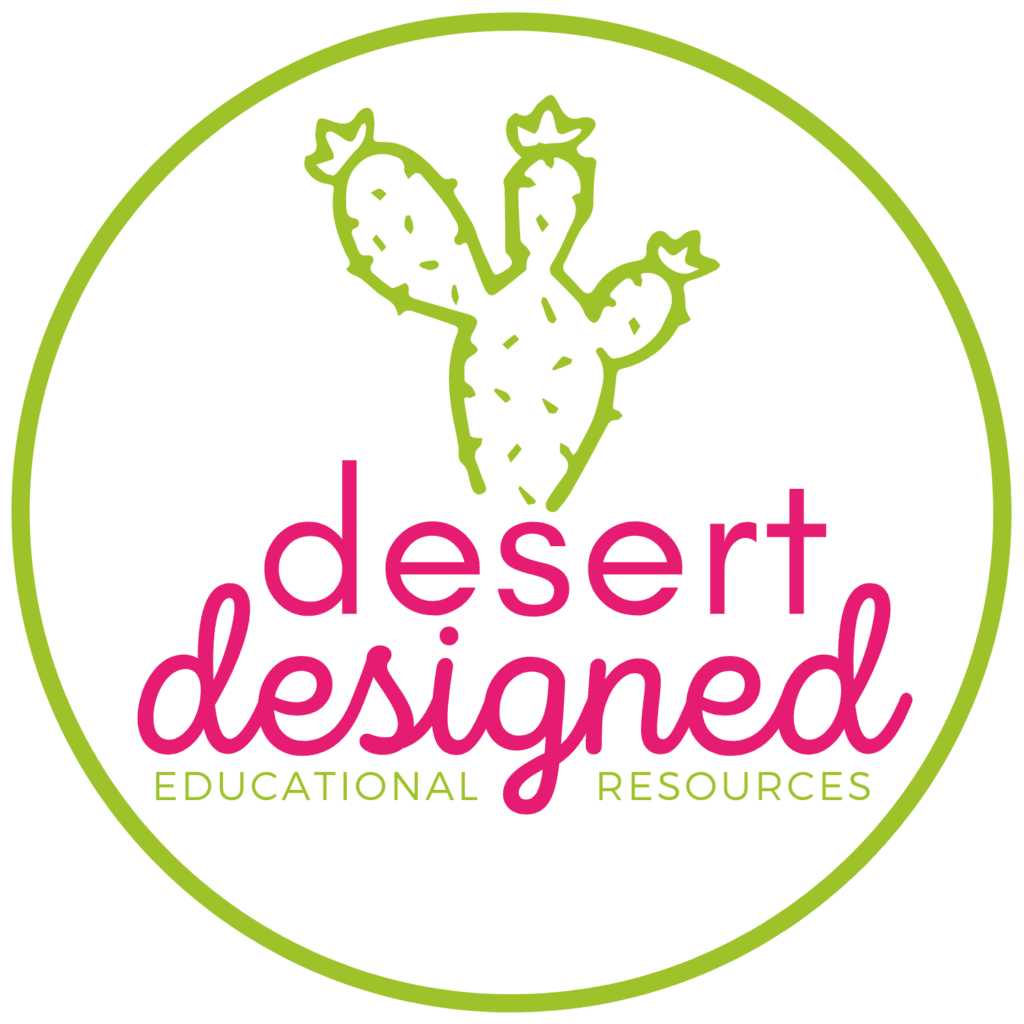Planning the sequence of math lessons for elementary students can be complicated. It’s overwhelming if you aren’t sure where to begin. There are several factors to consider when planning out the sequence of your math lessons. You must know your end goal, students’ starting skill set, and the sub-skills students need to be successful in mastering the concept.
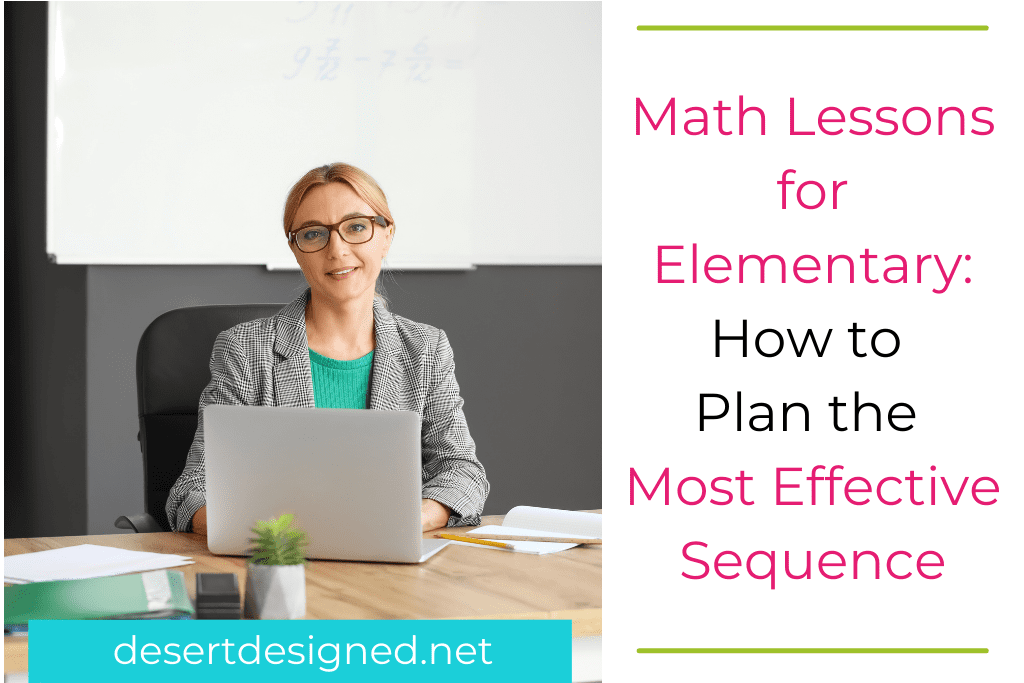
Getting Started with Math Lesson Planning
There are three main things to consider before you start the math lessons process for your elementary students. Be sure that you are familiar with the final assessment, have unpacked the standard, and know your students’ starting ability level.
Beginning with the End
It is essential to make sure you understand the end goal for your math instruction. If you don’t know what you will be expecting your students to complete when the instruction is over, it will be tough to lead them to the correct level of understanding.
If you have a required curriculum, this should begin with looking at the summative assessment provided in the math lessons. Many teachers forget how important it is to take the time to look over the types of questions the students will be asked at the end of the lesson and are then surprised or frustrated when the kids don’t do well.
If you write your assessments, begin your lesson planning by writing the assessment that you expect the students to complete.
Unpack the Math Standard
The idea of unpacking or unwrapping standards can seem daunting for some and frustrating for others. Some teachers feel like planning math lessons for elementary shouldn’t require this step. I understand your frustration if this is a task you don’t want to complete. It can take time, and for many teachers, it feels like a waste of time.
I’m not asking you to spend hours and hours completing this task. Instead, make sure you read the standard and spend a few minutes thinking through what vocabulary terms students will need to understand to succeed when learning it. If you need more help planning vocabulary instruction, check out this post.
After you consider the vocabulary students need to master, consider the skills they will need to have a grasp of the material. Here are some questions you can ask yourself:
- What are the steps required to complete this math process?
- Which skills are needed to complete those steps?
- What SHOULD my students have learned in the prior grade?
- How will I know when students are ready to move on to the next step?
Again, this does not need to be a long, formal process for you as an individual teacher. However, taking the time to think through these questions is worth it.
Meet Your Students at Their Current Ability Level
Now that you know the end goal and the sub-skills of the given standard, think about your students’ current abilities. You might already know what your kids can do. However, at other times, some type of pre-test or formative assessment may be necessary. Formative assessment will help you understand your students’ abilities related to the prerequisite skills for this standard.
Here’s an example:
Let’s say you are trying to teach students to add fractions with unlike denominators. However, they do not understand the concept of equivalent fractions, you know that you must spend time forming that foundation. On the other hand, if your students are already proficient at generating equivalent fractions, you can jump right into adding fractions.
Creating the Math Lesson Plan
Now that you have identified your final assessment, unpacked the standard, and have a sense of your students’ current ability levels, it is time to hash out your plan. There are two great ways to go about this.
Backward Planning
To do backward planning, you will begin with the test that you will give. From there, break down the types of questions that students will be required to answer. What skills do students need to complete the assessment? What skills do they already have? Here is an example for thinking through backward planning for the topic: add fractions with unlike denominators.
If you want to learn more about backward design for lessons, this is a great article to explore on the Cult of Pedagogy.
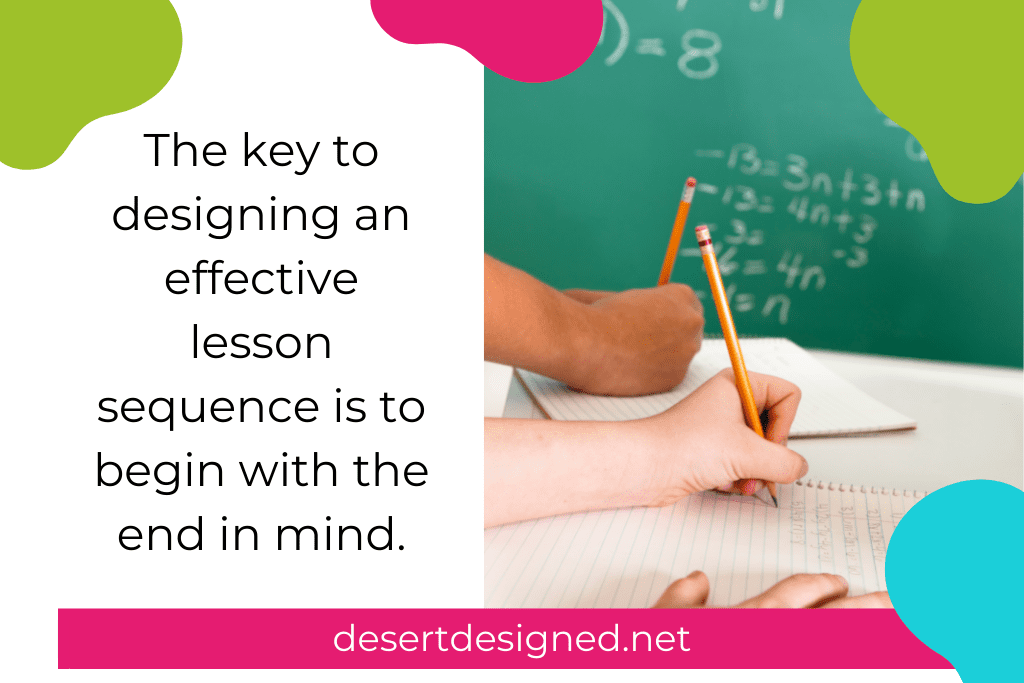
I look at the test and see what the questions ask. Now, I work backward from here. Since there are several word problems, I want to make sure I wrap up the unit with practice solving the questions in a word problem format. Also, I know that I need to use some word problems throughout my other lessons. Since several problems require simplifying the final answer into a mixed number from an improper fraction, I need to make sure I teach the students to turn improper fractions into mixed numbers.
When I think of the skills I need to cover, I will break them down from complex to simple.
- Solving word problems for adding fractions with unlike denominators
- Solving addition problems with unlike denominators with simplifying the answer into a mixed number
- Turning improper fractions into mixed numbers
- Adding fractions with unlike denominators with proper fraction answers.
- Simplifying fractions
- Finding common denominators & generating equivalent fractions
- Adding fractions with common denominators – *depends on the prerequisite skillset.
As I think through this list, I think of the most challenging end goal: solving word problems for adding fractions for unlike denominators. Next, I think, what do students need to do to solve these word problems? Answer: they should be able to add fractions. Now I will think about what students need to be able to do to add fractions with unlike denominators? They need to be able to find common denominators and generate equivalent fractions, and so on.
Working through this backward process helps me think of all the skills students must have to complete each more complex task.
Elementary Math Lesson Planning from Ability Level
When using this process, you want to think about what your students can complete unassisted. In my example above, I know that my students can add fractions with common denominators.
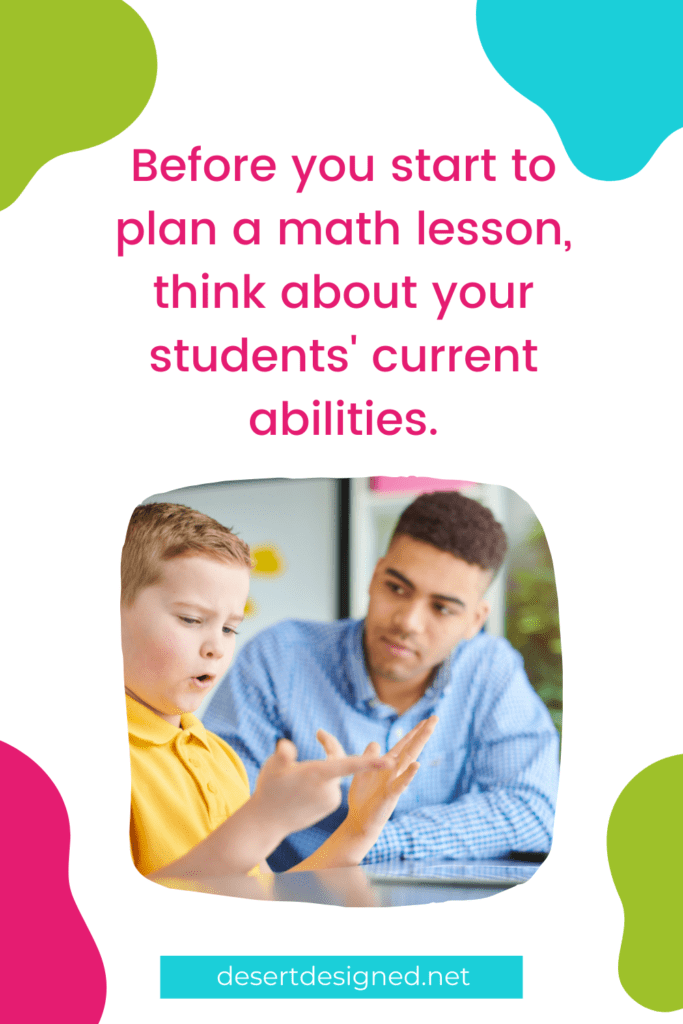
Next, I think about the next level of difficulty in the process towards the end goal. If students can add fractions with common denominators, I need to teach them to find common denominators. I continue with this process, thinking through more and more skills the students will need to progress through until they fully grasp the concept.
Timing When Planning Elementary Math Lessons
Once you figure out the progression of skills that you need to work through, it is time to plan out the timing. How long do you need to spend having the students practice each skill? Planning timing is where your understanding of your class, as well as formative assessments, come in handy!
From one year to the next, I rarely spend the same amount of time on every lesson. Each set of students comes with unique strengths and weaknesses. As an effective teacher, you need to know your kids and adapt to their needs.
For example, there are some years when I spend 2-3 days just finding common denominators and changing the fractions to have common denominators. However, we spend just one part of one lesson on this in other years because the students already grasp the idea and simply need a little refining.
Keeping students on their toes without pushing the pace of your elementary math lessons too fast is a key to engagement. Once students have a sufficient grasp on a concept, move on. Continuing to teach and practice a mastered skill is a great way to lose your students’ attention and encourage off-task behaviors.
The same goes for moving on too fast. If you have pushed your students so quickly that they haven’t had the time to grasp the foundational skills, this will also lead to a lack of engagement because students will be lost. When kids don’t have the foundation to do the task at hand, they will often become frustrated, give up, and either zone out or become a behavior problem.
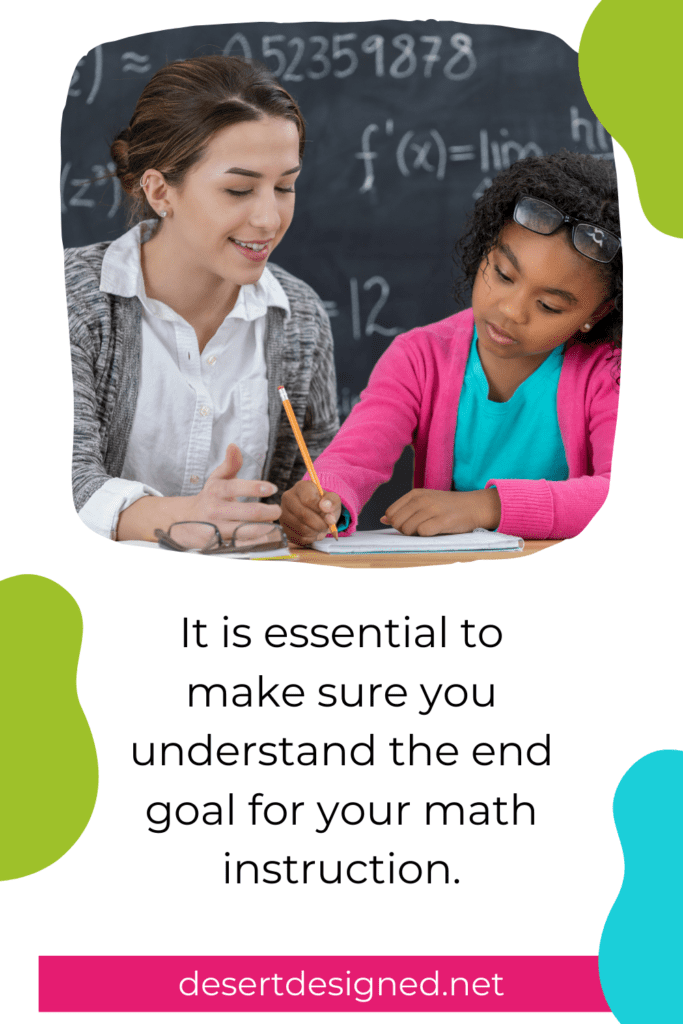
Plan Your Elementary Math Lesson Now
Now that you have read how to plan the sequence for your math lessons for your elementary class, put your new knowldge to work for you. I’d love to hear how it goes! Also, make sure to join my email list today to get monthly updates about new teaching ideas, tips, and products available by Desert Designed Educational Resources!

